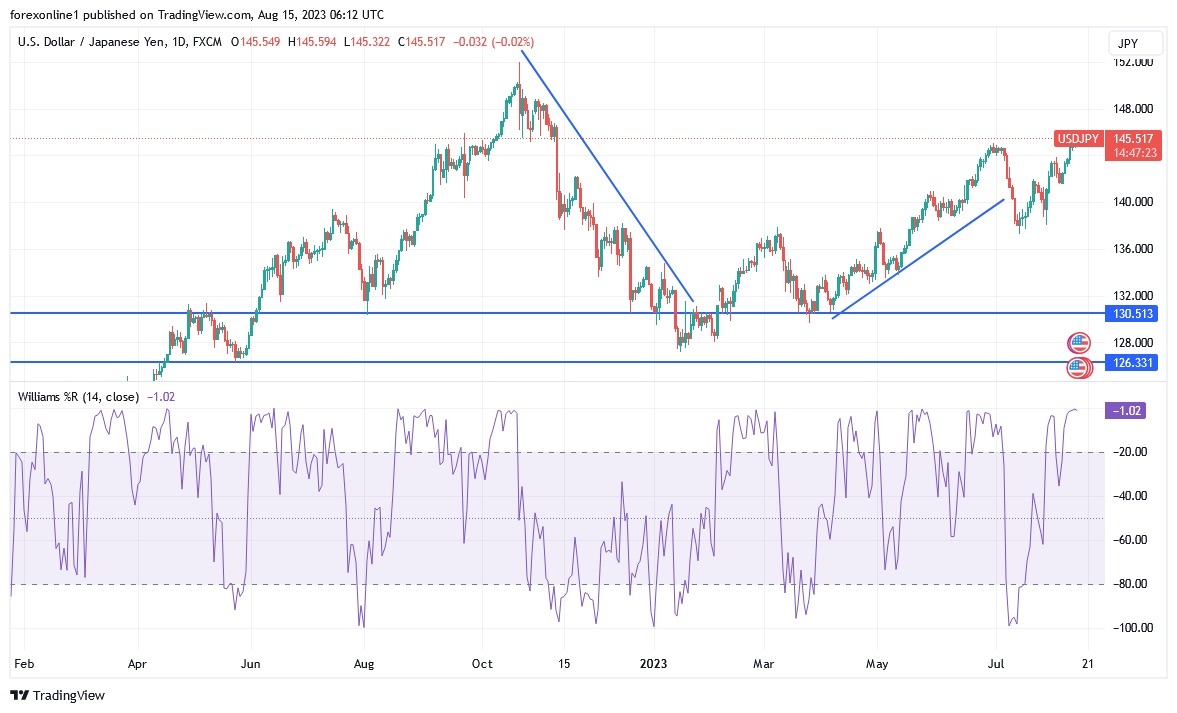[ad_1]
While investors were excited, not everyone thinks this will be sustainable in the second half of the year.
- The USD/JPY was almost flat against other currencies in Asian trading after better-than-expected economic data. All eyes were on the world’s third-largest economy and the GDP growth rate for the second quarter.
- However, the price of the USD/JPY currency pair remained in its sharp upward path, with gains that extended today, the resistance level of 145.73, its highest in 9 months.
- As I mentioned before, the discrepancy between the aggressive US Federal Reserve policy and the Bank of Japan’s negative interest rate is an important factor for the bulls’ further control over the trend.
Forex Brokers We Recommend in Your Region
See full brokers list
As officially announced, during the April-June period, Japan’s economy advanced by 1.5%, up from 0.9% in the first quarter and above the consensus estimate of 0.8%. The annual GDP growth rate was 6%, up from 3.7%, and beat economists’ forecasts of 3.1%. In addition, capital expenditure held steady at 0%, private consumption decreased by 0.5%, external demand increased by 1.8%, and the GDP price index rose to 2.6%.
The Nikkei rose by more than 200 points. Government bond yields fell across the board, with the 3-month yield unchanged at -0.105%, the 10-year yield down 0.004 basis points to 0.617%, and the 30-year yield down 0.007 basis points to 1.588%.
While investors were excited, not everyone thinks this will be sustainable in the second half of the year.
“The Japanese economy expanded at a very fast pace in the last quarter, but we expect a renewed slowdown during the second half of the year,” wrote Marcel Thelliant, an analyst at Capital Economics.
One of the reasons why Japan’s GDP for the second quarter was not as great as the headline indicates was because of the jump in net trade. Instead, almost all of the increase in output was driven by a 1.8% point increase in net trade. That represented the second largest contribution from net trade in the 28-year history of the current GDP series, with only a rebound in exports from the first lockdown at the start of the pandemic providing an even bigger boost.
Meanwhile, the latest economic news comes after the Bank of Japan (BoJ) eased its yield curve grip on 10-year government bonds to ensure the central bank’s ultra-easy monetary stance was more sustainable.
According to the performance on the daily chart below, the general trend of the USD/JPY currency pair is upward, and its recent gains have moved all technical indicators toward strong overbought levels.
It is currently moving towards levels that have increased the talk about the imminent Japanese intervention in the markets to prevent a further collapse of the price of the Japanese yen. Accordingly, It is better to be careful not to buy from those peaks and think better of selling deals until Japanese actions, because if they happen, there will be strong selling operations to take profits. Currently, the nearest resistance levels for the trend are 145.90 and 147.00, respectively.
On the other hand, for the same time period, the support levels at 143.90 and 142.00, respectively, will be important to start initial control of the bears. As I mentioned before, the contrast between the aggressive US Federal Reserve policy and the Bank of Japan, which has negative interest rates, will remain an important factor for the continuous control of the bulls. Regarding this, the US dollar will have an important date with the announcement of the content of the minutes of the last meeting of the US Federal Reserve tomorrow.
 Ready to trade our Forex daily forecast? We’ve shortlisted the top forex brokers in the industry for you.
Ready to trade our Forex daily forecast? We’ve shortlisted the top forex brokers in the industry for you.
[ad_2]